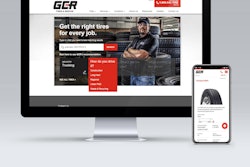By Lynn Buck, MacKay & Company
As the last mile has gotten shorter, we’ve seen a shift to lighter-duty vehicles. Today’s consumers receive their purchases delivered to their doorstep by smaller vehicles. Items are often shipped individually as they are in stock, resulting in more, smaller shipments instead of larger bulk deliveries. An increase in the number of individual, urban deliveries also leans toward lighter-duty for both parking and maneuverability.
Our purchased goods also are lighter. The television I had delivered back in 2002 weighed nearly 200 lb. while the same size screen I purchased in 2010 weighed only 50 lb. That same television takes up one-quarter of the space as the old one. Both trends point to a shift to light-duty.
The last warehouse in the supply chain is now closer to the consumer than ever before — I have two Amazon warehouses within 10 miles of my house to accommodate same-day shipping. Consumers also are demanding more of their food from local sources, with some having food delivered to their homes. Delivery of time-sensitive products leads to shorter routes and often smaller loads.
There are many reasons to downsize to a lighter-duty truck. Companies are looking to cut the cost of overhead using more fuel-efficient vehicles — “right sizing” to its primary application. The ability to analyze usage or delivery data and optimize routes have contributed to efficiencies allowing companies to spec only those vehicles that are necessary. Some companies desire less engine maintenance complexity and expense and may shift to gasoline powered vehicles over diesel. Often this means going to a lighter-duty truck.
These factors point to a diminishing need for larger trucks and have driven the demand for lighter vehicles higher. With online purchases steadily growing, this trend is likely to continue for the foreseeable future.
A quick analysis of Wards’ retail sales provides the data behind the trend.
Examining the last 15 years of Wards’ light-duty retail sales illustrates this shift quite well. In 2002, retail sales of Class 3 trucks accounted for 20 percent of the total Class 3-8 truck sales. In 2017, Class 3 represented 43 percent. Total Class 3-5 was 35 percent of Class 3-8 trucks sold in 2002; now it is closing in on 60 percent.
Not surprisingly, the same trend is seen in parts demand. Using our MacKay & Company DataMac Light-Duty Database, I graphed out the aftermarket parts demand of Class 3-5 trucks for the last 10 years. Aftermarket parts demand in 2017 for Class 3 trucks is 281 percent the demand of 2007. Class 5 trucks’ 2017 aftermarket parts demand is 313 percent of 2007 demand. Class 4, conversely, decreased 13 percent over the same time period. No surprise, more trucks equals more parts opportunity.
Of course, this article is heavily slanted toward package delivery and there will always be a need for trucks that are used for tasks that require auxiliary power via PTO, haul or tow-heavy loads necessitating a larger, more powerful truck. But the days of “always buy more than you need” appear to be dwindling. There is no denying the data that some companies have made and will continue to shift to lighter vehicles in their fleets.
Lynn Buck, information technology analyst, joined MacKay & Company in November 2012. His background includes more than 15 years of data analysis and reporting in a variety of settings. Most recently, he has performed the roles of pricing manager and inventory manager for two aftermarket parts distributors. Prior to that, he analyzed markets for new parts and service locations for Navistar.











